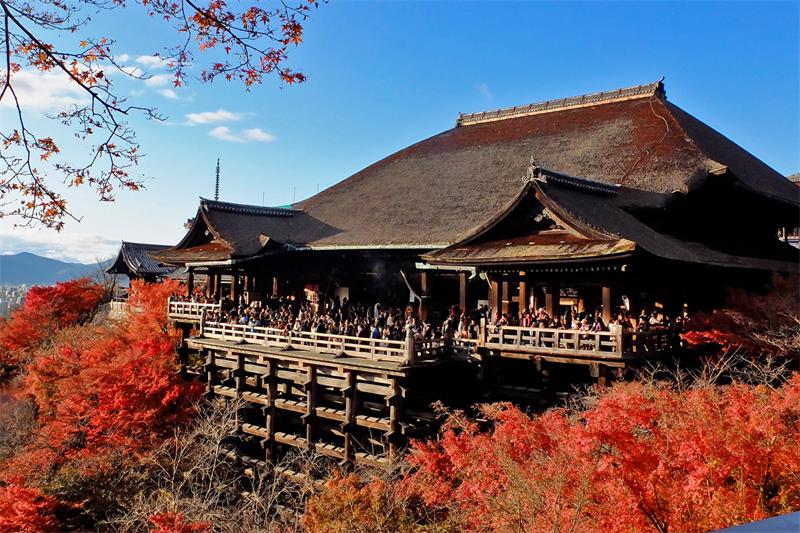Contents
- 1 The Importance of Planning an Itinerary
- 2 The Benefits of Having a Well-Planned Itinerary
- 3 Determine Your Destination
- 4 Decide on the Length of Your Trip
- 5 Create a Budget: How to Plan the Perfect Itinerary for Your Trip
- 6 Research Accommodation Options
- 7 Plan Your Activities
- 8 Consider Transportation Options:
- 9 Leave Room for Flexibility
- 10 Pack Smartly
- 11 Conclusion
The Importance of Planning an Itinerary
Have you ever gone on a trip without any plan or direction? You might think that spontaneity is the key to an exciting journey, but in reality, it can lead to confusion and chaos. Planning an itinerary is essential to make the most out of your travel experience.
Planning an itinerary allows you to organize your time effectively. By creating a schedule for each day, you can maximize your visit by fitting in as many activities and sightseeing locations as possible.
Without a proper plan, you may end up wasting time figuring out what to do next instead of enjoying the moment. Moreover, planning ahead gives you peace of mind.
Knowing what lies ahead will help you avoid unnecessary stress and anxiety. By having a well-thought-out itinerary in place, you won’t have to worry about missing out on any must-see sights or experiences.
The Benefits of Having a Well-Planned Itinerary
A well-planned itinerary not only helps with time management and stress reduction but also brings several other benefits. Firstly, it helps with budgeting. By planning out expenses such as accommodation and transportation costs beforehand, you can avoid overspending or running into unexpected expenses.
This way, you can also allocate funds towards activities that matter most to you. Secondly, having a detailed itinerary enables better preparation for the trip.
You will know what type of clothes to pack based on weather conditions while ensuring that all essential items are brought along. A well-planned itinerary also enhances your overall travel experience by providing structure and purpose for each day’s activities.
It allows for more seamless transitions from one activity or location to another while making sure no important site goes unseen. Planning an itinerary is crucial when traveling as it offers numerous benefits such as smoother transitions between destinations and more effective use of time while allowing for better budgeting leading to less stress and more peace of mind during your trip.
Determine Your Destination
Choosing the Right Destination Based on Your Interests and Budget
Choosing the right destination for your trip can make or break your experience. It’s essential to consider your interests and budget when selecting a place to visit.
If you’re interested in history, you might want to visit cities with significant landmarks like Rome or Athens. On the other hand, if you’re an adventure junkie, then perhaps hiking in Peru or scuba diving in Thailand is more up your alley.
Of course, budget plays a role too. Some destinations are undoubtedly more expensive than others, so it’s essential to consider how much money you have to spend on your trip.
If money is no object, then the sky’s the limit! But if you’re on a tight budget, there are still plenty of exciting places to visit that won’t break the bank.
Researching the Best Time to Visit
Once you’ve chosen your destination based on your interests and budget, it’s crucial to research when the best time of year is to visit. For example, if you’re traveling somewhere tropical during hurricane season, then be prepared for possibly stormy weather that could ruin even the best-planned itinerary. Similarly, some destinations are better visited during certain times of the year due to weather patterns or seasonal events.
For example, visiting New York City during Christmas time is magical with all of its holiday decorations and festivities. In contrast, visiting NYC in January might not be as exciting due to colder temperatures and fewer activities happening.
It’s also worth checking out peak travel seasons and seeing whether traveling off-peak would suit both budget-wise and activity-wise as prices tend to fluctuate depending on high demand from popular tourist seasons. Overall researching before booking can give us an added advantage by allowing us maximum value for our investors while choosing window periods where expenses are less but experiences remain full of fun.
Decide on the Length of Your Trip
Determining How Long You Can Stay in Your Chosen Destination
One of the most important factors to consider when planning your trip is how long you can realistically stay in your chosen destination. This will depend on a number of factors, such as how much time off work you can get, what your budget is, and what else you have planned for the year.
To start, take a look at your schedule and determine how many days or weeks you can realistically set aside for your trip. If you’re able to take an extended vacation, great!
If not, don’t worry – there are plenty of ways to make the most of a shorter trip. Once you’ve determined how much time you have available, do some research on your destination to get an idea of what there is to see and do.
For example, if you’re planning a trip to Paris, France, spending just two or three days in the city wouldn’t do it justice. On the other hand, if you’re visiting a smaller city or town with fewer tourist attractions, a shorter stay might be appropriate.
Considering Travel Time and Jet Lag
When deciding on the length of your trip, it’s also important to factor in travel time and jet lag. If your destination requires a long flight or multiple connections, it’s important to give yourself enough time to recover from any jet lag before diving into sightseeing activities. For example, if you’re traveling from New York City to Tokyo – which involves around 14 hours of flying time – it might be wise to plan for at least one day of rest before starting any major activities.
This will give your body time to adjust to the new time zone and help prevent fatigue during your trip. Keep in mind that travel time can also affect how much time you actually have on the ground in your destination.
For example, if you’re taking a 10-hour flight to Europe, you’ll likely lose a full day of your trip to travel. Plan accordingly and make sure you have enough time in each destination to truly soak up the experience.
Create a Budget: How to Plan the Perfect Itinerary for Your Trip
One of the most important things to consider when planning your trip is your budget. Setting a realistic budget can help you make the most of your trip without overspending or running out of money midway through. To create a budget, start by determining how much money you can comfortably spend on your trip.
Setting a Realistic Budget for Your Trip
To set a realistic budget, consider all of the expenses associated with your trip, including transportation, accommodation, food, activities, and souvenirs. Researching prices for each category ahead of time can help give you an idea of how much money you will need. Be sure to also factor in any unexpected expenses that may arise during your trip.
When creating your budget, be honest with yourself about what you can afford. It is better to have a smaller budget and enjoy everything within it than to overspend and stress about finances during the vacation.
Remember that it’s not just about how much money you have but also how wisely you allocate it. A tight budget doesn’t mean compromising on quality or experiences as there are always affordable ways to travel and explore new destinations.
Allocating Funds for Transportation, Accommodation, Food, Activities, and Souvenirs
Break down your total budget into separate categories such as transportation costs (including flights or car rental), accommodation costs (hotel or apartment rental), food expenses (dining out or cooking at home), activities (museum tickets or adventure tours), and souvenirs (gifts for family back home). Allocating funds into separate categories will help prevent overspending in one area while neglecting the other necessities. You may want to prioritize some categories over others depending on what means more to you when traveling.
For example, if you are more interested in sightseeing and outdoor activities, you may want to allocate more funds for activities and transportation and cut back on fancy meals. Also, consider using local transportation or walking instead of Uber or taxis as these options can save you money while also allowing an authentic local experience.
Creating a budget is essential when planning your trip as it helps ensure a stress-free travel experience. By setting a realistic budget and allocating funds wisely, you can make the most of your trip without breaking the bank.
Research Accommodation Options
Where you stay can make or break your trip. It’s important to research your accommodation options to find the best deal for your budget and the most convenient location for your itinerary.
There are many websites that can help you find great deals on hotels, hostels, vacation rentals, and even camping sites. Some of our favorites include Hotels.com, Booking.com, and Airbnb.
Finding the Best Deals on Hotels or Alternative Accommodations
If you’re looking for a hotel, it’s important to book early to get the best deal. You can also try calling the hotel directly and negotiating a lower price if they have any available rooms.
If you’re traveling during the off-peak season or are willing to stay in a less popular area of town, you can often find great deals on hotels. Alternative accommodations like vacation rentals or hostels can be more affordable option than hotels.
Vacation rental websites like Airbnb offer unique accommodations that can make your trip even more memorable. Hostels are great if you’re traveling solo or with a group and want to meet other travelers.
Considering Location and Amenities
When researching accommodation options, be sure to consider location and amenities. If you plan on visiting certain attractions frequently or want to be close to public transportation, choose an accommodation that is centrally located. Make sure it has all the amenities you need such as wifi, air conditioning/heating (depending on the climate), kitchen facilities if necessary, etc.
If relaxation is key for your holiday then looking into spa facilities at hotels could be an option too! Alternatively, those traveling with children will want childcare facilities available too so do check out what’s on offer before making any reservations!
: Researching your accommodation options is crucial in planning a successful itinerary. Make sure to find the best deals, consider location and amenities and feel free to get creative with your choices!
Plan Your Activities
One of the most exciting parts of planning a trip is deciding what activities you want to do and what sights you want to see. Making a list of must-do activities and attractions can help you prioritize your time and ensure that you don’t miss out on anything important. Start by doing some research on popular tourist hotspots, but don’t be afraid to go off the beaten path and explore lesser-known gems in your destination.
Making a List of Must-Do Activities and Attractions
When compiling your list of must-do activities, think about what interests you most. Are you a nature lover or an art enthusiast?
Do you prefer adventure sports or shopping? Once you’ve identified your top interests, research the best spots for those activities in your destination.
For example, if hiking is a priority for you, find out which trails offer the best views or lead to hidden waterfalls. It’s also important to consider practicalities such as opening hours and ticket prices when planning your itinerary.
Make sure to book any popular attractions in advance to avoid disappointment. Keep in mind that some attractions may require extra time or effort – for example, visiting a museum might take several hours while hiking up a mountain could take all day – so plan accordingly.
Researching Lesser-Known Sights and Experiences
While it’s great to see the famous landmarks and tourist hotspots, don’t overlook the hidden gems that can make your trip truly unique. Researching lesser-known sights and experiences can help add depth and variety to your itinerary.
Consider seeking advice from locals or other travelers on social media platforms about places they recommend visiting. You could also look into local festivals or events happening during your stay – this is an excellent way to immerse yourself in the local culture and meet new people.
Don’t be afraid to step out of your comfort zone and try something new – the best memories often come from unexpected experiences. With a solid list of must-do activities and some unique, off-the-beaten-path experiences in mind, you’re well on your way to planning the perfect itinerary for your trip.
Consider Transportation Options:
Deciding on the most efficient mode of transportation for each leg of your journey
When planning a trip, transportation is often a crucial aspect that can make or break your entire experience. Deciding on the most efficient mode of transportation for each leg of your journey is important to ensure you get to your destinations on time and with minimal hassle.
Depending on where you’re going and how far away it is, you may need to consider various forms of transport such as flights, trains, buses, or rental cars. One of the most popular ways to travel long distances is by plane.
It’s usually faster and more convenient compared to other modes of transport. However, it can also be quite expensive if not planned well in advance.
To save money on flights, try booking tickets at least 6 weeks before departure and choose budget airlines if possible. If you’re traveling within a continent or country with a well-developed rail network like Europe or Japan, taking a train can be an excellent option.
Trains are typically comfortable and reliable, offering scenic views along the way. They also allow for more flexibility in terms of where you want to go since there are often many stations within cities.
For shorter distances or exploring urban areas, buses or metro systems may be sufficient. Buses offer greater flexibility when traveling between cities because they often have more frequent departures than trains do; however, they can be slower.
Booking Transportation in Advance to Save Money
Booking transportation in advance is essential not only because it saves money but also because it minimizes stress during your trip. You don’t want to find yourself stranded without a ride from the airport or unable to secure train tickets due to them being sold out. When booking flights early in advance (at least six weeks), prices tend to be lower than when booked closer to departure day as airlines try to fill seats.
Planning your trip early also has the added benefit of giving you more time to research and compare different airlines and flight options to obtain the best deals. Similarly, booking train tickets ahead of time can lead to significant savings.
Many railways offer “advance purchase” specials, which allow travelers to book tickets weeks or even months in advance at discounted prices. Always do some research on train schedules and prices on different websites before deciding.
When renting a car, booking ahead of time ensures availability at your preferred rental location and also gives you the opportunity to compare prices across various rental agencies. It is important to note that car rental prices tend to vary significantly depending on demand, so book early.
Conclusion
Transportation is a crucial part of travel planning that requires careful consideration. When planning a trip, it’s important not only to decide on the most efficient mode of transportation for each leg of your journey but also to book transportation well in advance in order to save money and minimize stress during your trip. Whether you’re flying long-haul or taking a bus within a city, being prepared with transportation arrangements will make your travel experience smoother and more enjoyable.
Leave Room for Flexibility
Allowing for Unexpected Changes or Delays in Your Itinerary
While it’s important to have a well-planned itinerary, it’s equally important to leave room for flexibility. During your trip, unexpected things can happen such as delayed flights, traffic jams, or unexpected weather conditions.
By allowing some flexibility in your schedule, you can accommodate these unforeseen events without feeling stressed or overwhelmed. One way to leave room for flexibility is by scheduling only one major activity per day and leaving the rest of the day open.
This gives you time to explore and take things at your own pace while still having a set plan in place. Additionally, it’s always best to arrive at attractions early in the morning before the crowds show up so that you have more time to enjoy them.
Keeping an Open Mind to New Experiences
Traveling is all about new experiences and stepping out of your comfort zone. While planning your itinerary, make sure to include activities that are outside of your typical routine or interests.
You never know what hidden gems you might discover! Be open-minded when trying new foods, engaging with locals, or taking part in cultural experiences that may be different from what you’re used to.
Embrace the differences and allow yourself to fully immerse in the culture of your destination. By keeping an open mind and being flexible with your plans, you’ll create memories that will last a lifetime.
Conclusion
Planning a perfect itinerary is all about finding a balance between structure and flexibility. While it’s important to have a plan in place for transportation, accommodations and activities; leaving room for spontaneity can add some excitement and adventure to your trip!
Remember – unexpected changes are bound to happen when traveling so keeping an open mind will allow you to go with the flow while exploring new destinations. Happy travels!
Pack Smartly
Packing light while still bringing everything you need
Packing is one of the most important parts of planning for a trip. You don’t want to overpack, but you also don’t want to forget anything important. The key is to pack as lightly as possible while still bringing everything you need.
Start by making a list of everything you’ll need for your trip, then go through it and eliminate anything that’s not absolutely necessary. Stick to the essentials and leave behind items that you can easily purchase at your destination if needed.
When it comes to clothing, choose versatile pieces that can be mixed and matched. Pack outfits that can be dressed up or down depending on the occasion.
Bring comfortable walking shoes and dressier shoes for going out at night. Roll your clothes instead of folding them to save space in your luggage.
Preparing for different weather conditions
One of the biggest challenges when packing for a trip is preparing for different weather conditions. Check the weather forecast before you leave and pack accordingly. Bring layers that can be easily added or removed depending on the temperature.
If you’re traveling to a destination with unpredictable weather, like a mountainous region or coastal area, pack rain gear and warm outerwear just in case. It’s always better to be over-prepared than underprepared.
Conclusion
Planning the perfect itinerary takes time and effort, but it’s well worth it in the end. By following these tips, you can create an itinerary that allows you to make the most of your time at your chosen destination while staying within your budget. Remember to research your destination thoroughly before setting out on your journey so that you know what sights and experiences are available there.
Consider all aspects of travel including transportation options, accommodation choices, packing needs, budgetary constraints, activities planned beforehand, etc., making sure to leave some room for flexibility. By following these tips, you can ensure that your trip is a success, leaving you with wonderful memories that will last a lifetime.













